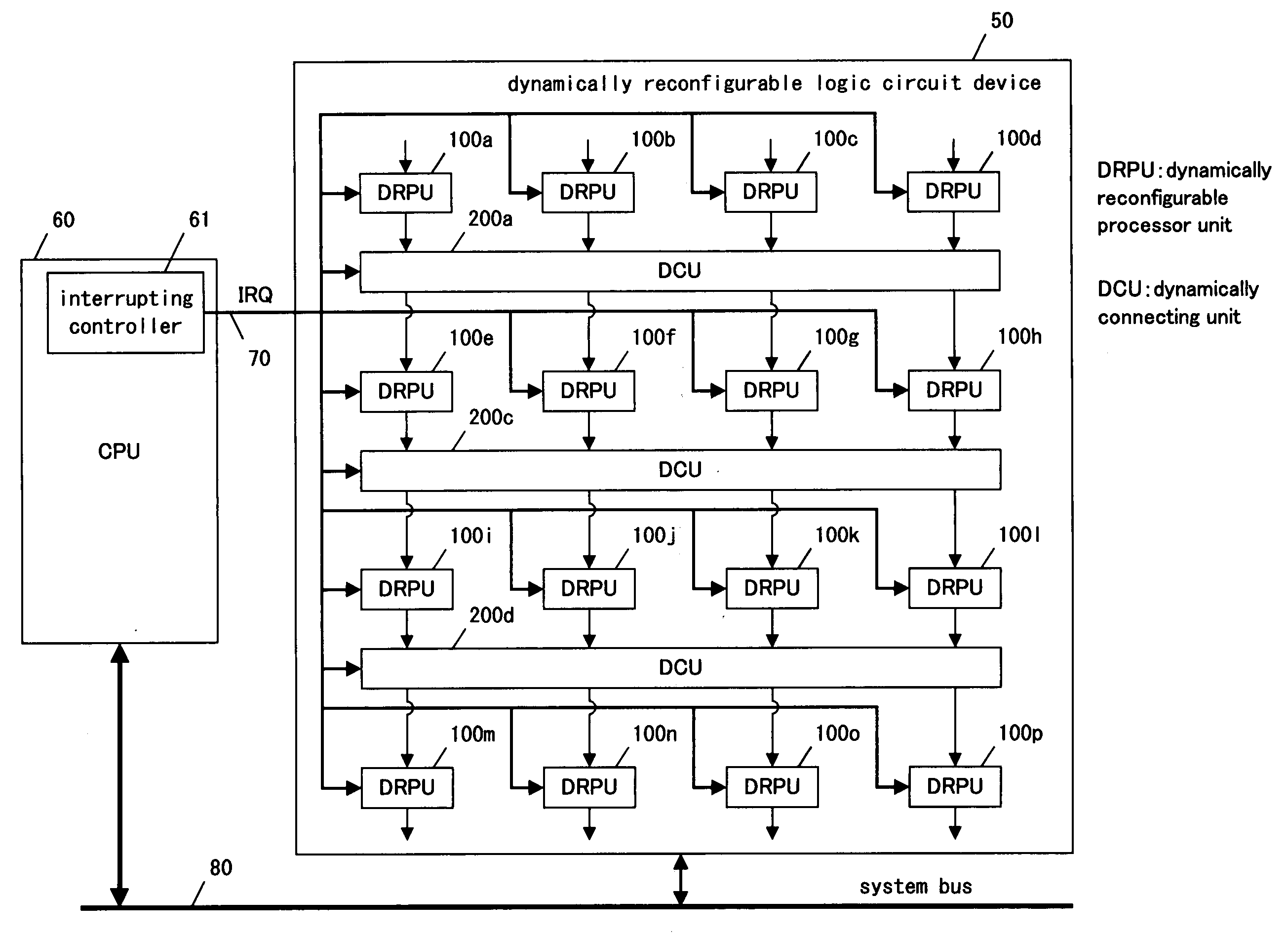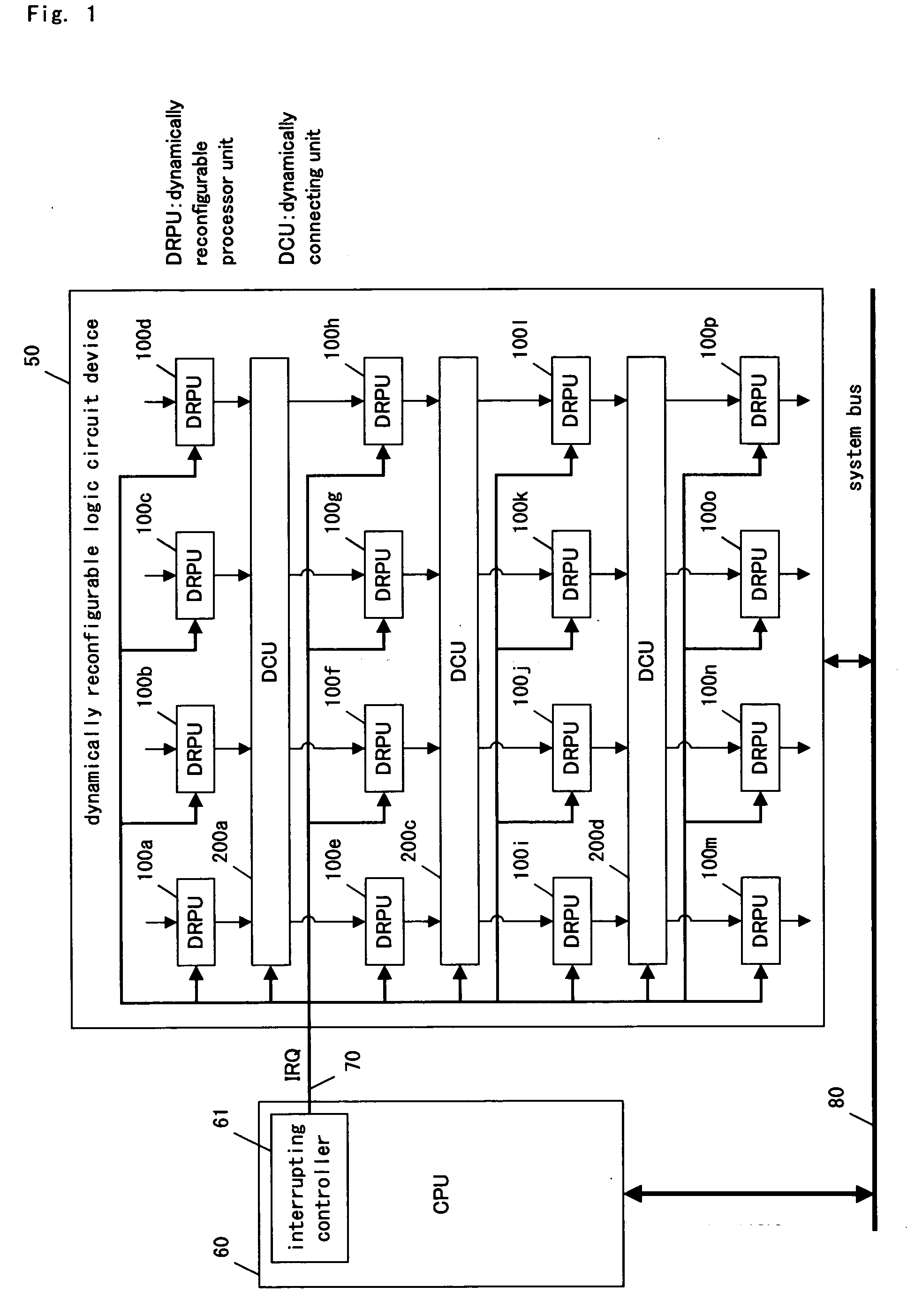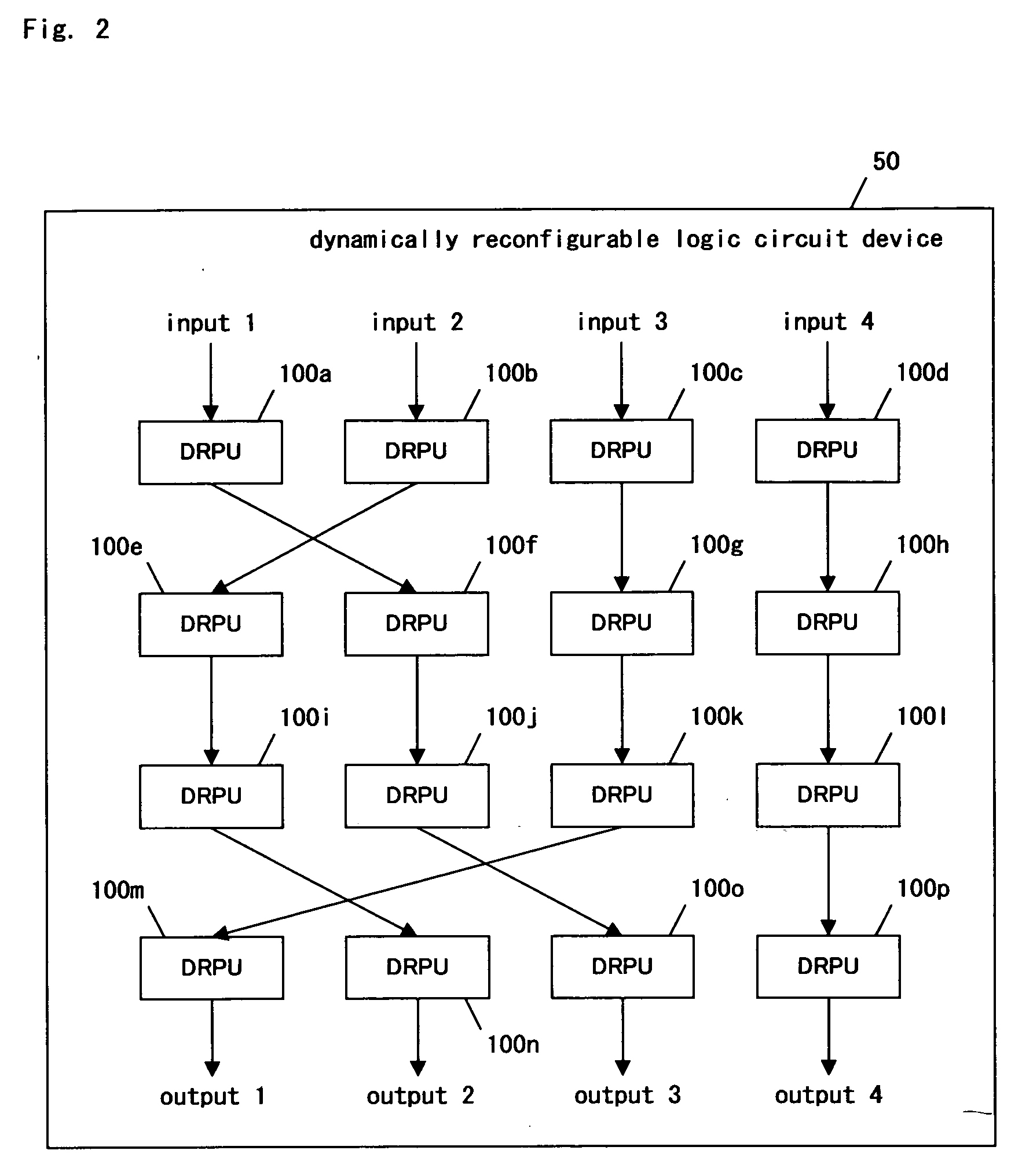Dynamically reconfigurable logic circuit device, interrupt control method, and semi-conductor integrated circuit
- Summary
- Abstract
- Description
- Claims
- Application Information
AI Technical Summary
Benefits of technology
Problems solved by technology
Method used
Image
Examples
first embodiment
[0056]FIG. 1 shows a block diagram illustrating a dynamically reconfigurable logic circuit device according to a first embodiment and a related part of a semi-conductor integrated circuit incorporating the dynamically reconfigurable logic circuit device. The related part of a semi-conductor integrated circuit includes a CPU 60, the dynamically reconfigurable logic circuit device 50, and a system buss 80. The CPU 60 includes an interrupting controller 61. The interrupting controller 61 is operable to transmit an interrupting signal (IRQ) 70 to the dynamically reconfigurable logic circuit device 50. Data are transferred through the system buss 80 between the dynamically reconfigurable logic circuit device 50 and the CPU 60 and other units (not shown) of the semi-conductor integrated circuit.
[0057] The dynamically reconfigurable logic circuit device 50 includes a plurality of dynamically reconfigurable processor units (DRPU) “100a” to “100p” arranged in array (hereinafter referred to ...
second embodiment
[0067] Referring to FIG. 4, a dynamically reconfigurable processor unit 100 according to a second embodiment as illustrated in block diagram form is shown including a pair of setting registers “101a”, “101b”, a pair of flip-flops “102a”, “102b”, a pair of flip-flops “104a”, “104b”, computing devices 103, 105, and 106, a pair of flip-flops “107a”, “107b”, a pair of input data-switching units 108, 109, and an output data-switching unit 110. The computing devices 103, 105 are operable to perform either shift or mask operation. The computing device 106 is operable to perform addition and subtraction. The dynamically reconfigurable processor unit 100 according to the present embodiment further may include two different data inputs, i.e., a data input (DataIn0) 111 and a data input (dataIn1) 112, and a single data output (DataOut) 113.
[0068] The setting registers “101a”, “101b” serve as setting information storage units. The computing devices 103, 105, and 106 function as arithmetic proc...
third embodiment
[0088] Referring to FIG. 6, a dynamically connecting unit 200 according to a third embodiment as illustrated in block diagram form is of the two-input / four-output type, and is shown including a set of selectors 221, 222, 223, and 224, a pair of connection registers “230a”, “230b”, and a single selector 225. The selectors 221, 222, 223, and 224 are operable to select connections between inputs and outputs of the dynamically connecting unit 200, and consequently serve as connecting units. The connection registers “230a”, “230b” function as connection information storage units operable to store connection information. The selector 225 is operable to select between the connection registers “230a” and “230b”.
[0089] In usual processing, the selector 225 selects the connection register “230a”, and selects respective connections of the selectors 221, 222, 223, and 224 in accordance with the connection information in the connection register “230a”. For example, the selector 221 connects an ...
PUM
 Login to View More
Login to View More Abstract
Description
Claims
Application Information
 Login to View More
Login to View More - R&D
- Intellectual Property
- Life Sciences
- Materials
- Tech Scout
- Unparalleled Data Quality
- Higher Quality Content
- 60% Fewer Hallucinations
Browse by: Latest US Patents, China's latest patents, Technical Efficacy Thesaurus, Application Domain, Technology Topic, Popular Technical Reports.
© 2025 PatSnap. All rights reserved.Legal|Privacy policy|Modern Slavery Act Transparency Statement|Sitemap|About US| Contact US: help@patsnap.com



